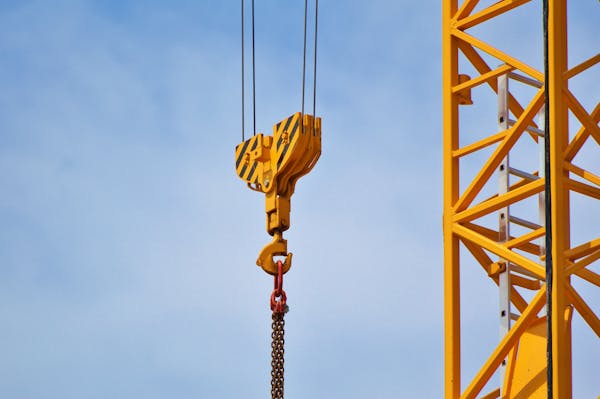Proper lifting and load securement services prevent accidents, protect goods, and ensure regulatory compliance across industries. Using certified equipment like ratchet straps, shoring bars, and pallets tailored to your needs boosts operational safety and reliability. Discover how professional solutions minimize risks and streamline handling—from construction sites to logistics hubs—helping your business stay efficient and secure.
Professional Lifting and Load Securement Services: What to Expect and How They Enhance Safety
Taking a closer look at modern lifting and load securement, Smithwick Engineering demonstrates how innovation and precision can transform site safety. Professional services begin with a thorough assessment, identifying each load’s size, weight, center of gravity, and movement risks. Certified rigging professionals develop a tailored lifting plan—incorporating load balancing strategies, proper equipment selection, and safety zone calculations—to address the unique requirements of logistics, construction, and industrial projects.
Also read : Effortless relocation services by expert home and business movers
Industrial lifting equipment such as chain slings, polyester webbing slings, and shoring bars is chosen for strength, flexibility, and application. Each piece is inspected for wear, certification compliance, and safe working limits. Once equipment passes inspection, crews execute rigging and crane operation safety procedures, using approved cargo tie-down methods: ratchet straps, load restraint bars, or modular securing systems.
Teams adhere to load restraint regulations and established safety standards for lifting, carefully monitoring tension and distribution during each operation. Pre-lift briefings, operational checks, and constant communication between team members ensure hazards are identified and mitigated quickly—helping to prevent mishaps, safeguard lives, and protect valuable assets and schedules.
Also to see : Lingotin d’or 20g : un bien précieux à découvrir
Comprehensive Equipment and Techniques for Safe Lifting and Securing
Types of Lifting Equipment: Slings, Chains, Restraint Bars, Platform Trucks, Hoists, and Cranes
Selecting the right industrial lifting equipment forms the backbone of safe operations in heavy load handling techniques. Chain slings usage is indispensable for managing awkward and hefty items, combining durability and flexibility. Slings, both webbing and round types, suit delicate machinery or oddly shaped loads where surface protection matters. Hoists and cranes enable controlled elevation, making heavy machinery transport manageable, while platform trucks grant seamless mobility during warehouse workflows. Each device requires scheduled lifting gear inspection to comply with safety standards for lifting and extend equipment life.
Essential Cargo Securing Devices: Ratchet Straps, Dunnage Bags, Shoring Bars, Lashing Straps, Edge Protectors
Cargo securing materials such as ratchet straps and shoring bars maintain load integrity during movement. Using restraint bars or a cargo pole for internal load restraint helps minimize shifting—a vital flatbed load securement method. Dunnage bags fill gaps to enhance load collaboration between teams and reduce dynamic load movement risks. Edge protectors and lashing straps lower the odds of cargo damage, supporting compliance with truck load securement guidelines.
Best Practices for Load Restraint and Heavy Load Handling
Applying load securing best practices begins with careful planning and lifting operation risk assessment. Proper load distribution analysis, use of adequate sling selection, and consistency in rigging solutions are essential. Pre-lift safety briefing, regular load securement equipment maintenance, and operator safety training contribute to minimizing incidents. Adhering to lifting operation planning reduces heavy cargo handling risks, reinforcing overall safety for each scheduled task.
Meeting Industry Needs: Solutions for Diverse Sectors and Customisation
Adhering to robust industrial load lifting regulations is critical for sectors like logistics, manufacturing, retail, and construction. Every operation depends on standardized load securing best practices to manage risks during heavy machinery transport, especially when route challenges or complex environments arise. Consistent regulatory compliance in lifting is non-negotiable, prompting regular load distribution analysis to achieve safety and efficiency regardless of cargo type.
Tailored rigging solutions and heavy machinery transport equipment—such as modular load restraint bars, load tensioning bars, and advanced cargo poles—are engineered for specific cargo, from hazardous materials to oversized or high-value loads. Customisation encompasses selecting the appropriate load bars for trucks or trailers, ensuring optimal load balancing strategies and compliance with tie-down strap regulations. For delicate shipments, such as pharmaceuticals or fragile retail products, load balancing strategies and cushioning materials deliver on both preventative and operational demands.
Quality assurance is at the heart of each process through supplier reliability checks, documented lifting equipment certification, and methodical equipment maintenance. Customers benefit from ongoing support across all regions and detailed guidance on regulatory compliance in lifting, operator safety training, and relevant load securing best practices. This comprehensive approach minimizes incidents and keeps goods, teams, and schedules secure.
Safety and Compliance: Training, Documentation, and Industry Leadership
Importance of Certified Professionals, Operator Training, and Ongoing Safety Audits
Operator safety training is non-negotiable when conducting any lifting operation planning. It begins with ensuring every handler receives comprehensive instruction, covering everything from sling capacity charts interpretation to the proper use of personal protective equipment rigging. Additionally, a pre-lift safety briefing provides essential risk mitigation, outlining the current site-specific hazards and reinforcing safety zones in lifting areas. Conducting routine lifting safety audits is indispensable—these help measure the effectiveness of incident prevention protocols and pinpoint areas requiring further attention.
Documentation, Regulatory Obligations, and Compliance with EN12195-2 and LOLER Standards
Meeting regulatory obligations is achieved by prioritizing thorough cargo load documentation and adherence to guidelines such as EN12195-2 and LOLER. This documentation details every stage, from crane operator certification status to the selection of proper lifting gear. Regular updating and availability of sling capacity charts, alongside PPE rigging checklists and other load securement documentation, ensures an organization remains prepared for inspection and maintains operational integrity.
Case Studies: Risk Reduction and Best-in-Class Outcomes
Organizations implementing rigorous pre-lift safety briefing sessions and systematic lifting safety audits have consistently seen reductions in operational incidents. Proactive operator safety training paired with accessible cargo load documentation supports informed decision-making and fast response, fostering best-in-class operational outcomes for lifting and load securement environments.











